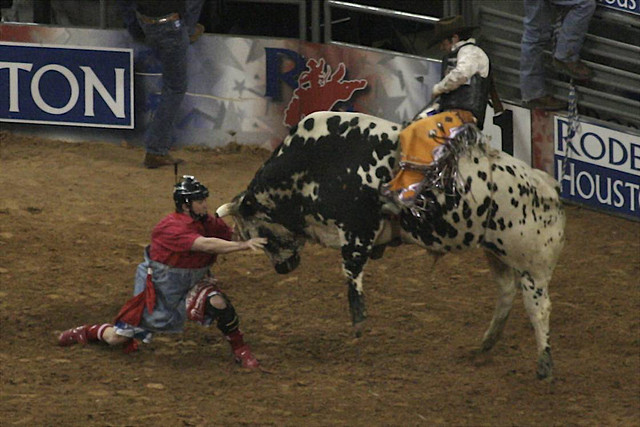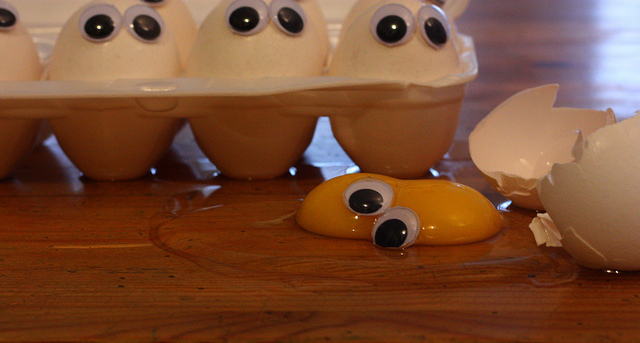Archive for July, 2016
When on vacation, be on vacation.
 As vacation approaches the work days drag. Sure you’re excited about the future, but when compared to the upcoming pleasantness, the daily grind feels more like a prison. Anticipating a good time in the future rips you from the present moment and puts you in a place you’d rather be. And when you don’t want to be where you are, wherever you are becomes your jail cell.
As vacation approaches the work days drag. Sure you’re excited about the future, but when compared to the upcoming pleasantness, the daily grind feels more like a prison. Anticipating a good time in the future rips you from the present moment and puts you in a place you’d rather be. And when you don’t want to be where you are, wherever you are becomes your jail cell.
Mid-way through vacation, as the work days approach, you push yourself into the future and anticipate the stress and anxiety of the work day. Though vacation should be fun, the stress around the workday and the impending loss of vacation prevent your full engagement in the perfect now. I’m not sure why, but for some reason your brain doesn’t want to be on vacation with you. It’s difficult to think of your perfect vacation as your jail cell, but while your brain is disembodied, I think it is.
And when vacation is over and you return to work, it’s pretty clear you’re back in jail. You put yourself back in the past of your wonderful vacation; compare your cubicle your previous poshness; and make it clear to yourself that you’d rather be somewhere else. And the better your vacation, the longer your jail time.
But it’s easier to see how we use unpleasant situations to build our jail cells. Our aversion to uncomfortable situations pushes us into the past to beat ourselves up over uncontrollable factors we think we should have recognized and controlled. We turn a simple unpleasant situation into a jail cell of self-judging. Or, we push ourselves into the future and generate anxiety around a sea of catastrophic consequences, none of which will happen. Instead of building jails, it’s far more effective to let ourselves feel the unpleasantness for what it is (the result of thoughts of our own making) and let it dissipate on its own.
The best way to become a jail breaker is to start with awareness – awareness your mind has left the present moment. When you’re on vacation, be on vacation. And when you’re in the middle of an unpleasant situation, sit right there in the middle of the unpleasant situation. (No one has ever died from an unpleasant situation.) And, as a skillful jail breaker, when you realize your mind is in the past or future, don’t judge yourself, praise yourself for recognizing your mind’s unintended time travel and get back to your vacation.
But this is more than a recipe for better vacations. It’s a recipe for better relationships and better work. You can be all-in with the people you care about and you can be singularly focused on the most challenging work. When someone is standing in front of you and you give them 100% of your attention, your relationship with them improves. And when you give a problem 100% of your attention, it gets solved.
Think about the triggers that pull and push you out of the present moment (the dings of texts, the beeps of emails, or the buzzes of push notifications) and get rid of them. At least while you’re on vacation.
People Are The Best Investment
 Anything that happens happens because of people, and anything that doesn’t happen doesn’t happen because of people. Technology doesn’t create itself, products don’t launch themselves, companies don’t build themselves and trust doesn’t grow on its own. Any kind of work, any kind of service, any kind of organizing – it’s all done by people.
Anything that happens happens because of people, and anything that doesn’t happen doesn’t happen because of people. Technology doesn’t create itself, products don’t launch themselves, companies don’t build themselves and trust doesn’t grow on its own. Any kind of work, any kind of service, any kind of organizing – it’s all done by people.
The productivity/quality movement has been good for factories – parts move in a repeatable flow and they’re processed in repeatable ways by machines that chunk out repeatable output. Design the process, control the inputs and turn the crank. Invest in the best machines and to do the preventative maintenance to keep them in tip-top shape. Just follow the preventive maintenance (PM) schedule and you’ll be fine. But when the productivity/quality movement over-extended into the people domain, things don’t go as well.
People aren’t machines, and their work product is not cookie-cutter parts. And, there’s no standard PM schedule for people. We all know this, but we behave like people are machines – we design their work process, train them on it and measure their output. But machines are iron-based entities that don’t have consciousness and people are carbon-based beings with full consciousness. The best machines do what their told, but the best people tell you what to do. Machines and people are fundamentally different, but how we run them is markedly similar.
Where machines need oil, people need empathy. And for empathy you need vulnerability and for that you need trust. But there’s no standard PM schedule for trust. There’s no flowchart or troubleshooting protocol for helping people. What work do you give them? It depends. When do you touch base and when do you leave them alone? It depends. How much responsibility do you give them? It depends. With machines it’s follow the PM schedule and with people – it depends.
Where machines wear out, people develop and grow. And to grow people you need to see them as they are and meet them where they are. And to do that you’ve got to see yourself as you are. You can’t give people what they need if you add to the drama with your reactivity and you can’t discern their suffering from your projections if you’re not grounded. How much time do you spend each day to learn to dampen your reactivity? How much time do you spend to slow your monkey mind so you can see your projections?
With machines it’s control the inputs and get what you got last time. With people it’s maybe; it depends; don’t worry about how it will go; and why don’t you try? Growing people is much more difficult than keeping machines running smoothly. But, there is nothing more fulfilling than helping people grow into something they couldn’t imagine.
Image credit – Benjamin Balazs
Hep
Hire people that run toward even the toughest problems.
 If you don’t have a problem, there’s no problem. There are no resources without a problem and certainly no focus or momentum. If you don’t know your problem, stop. Take time to define your problem using a single page. Make a sketch or make a block diagram but make it clear. Make it so the problem description stands on its own. After you’ve defined your problem and someone calls it an “opportunity”, walk away because they can’t help you. Taking advantage of opportunities is optional, but solving problems is mission critical. No one worth their salt works on opportunities. Rock stars solve problems.
If you don’t have a problem, there’s no problem. There are no resources without a problem and certainly no focus or momentum. If you don’t know your problem, stop. Take time to define your problem using a single page. Make a sketch or make a block diagram but make it clear. Make it so the problem description stands on its own. After you’ve defined your problem and someone calls it an “opportunity”, walk away because they can’t help you. Taking advantage of opportunities is optional, but solving problems is mission critical. No one worth their salt works on opportunities. Rock stars solve problems.
After you’ve gnawed on a problem for a month and it hasn’t given in, what do you do? When you’ve thrown everything at a problem and it still stands tall, what do you do? When you’ve tried all your tricks and the intractable problem is still blocking an already overdue product launch, what do you do? What you do is find someone who is unafraid trade an intractable problem for a solvable one, someone who will courageously give ground with the hope of opening up new design space, someone who will unabashedly take an anti-conventional (and hopefully controversial) approach. What you do is find a rock star.
Intractable problems are not usually intractable; rather, intractable problems are either poorly-defined problems or are the wrong problem altogether. Either way, it takes someone with courage, usually an outsider, to redefine the problem or see it differently. But because of pride, an outsider can be brought in only after the team has exhausted all other possibilities. Unless there’s a problem with the problem solving team (they can’t solve the problem), there’s no problem. And without a problem, the team won’t accept help from an outsider.
At the rodeo when the cowboy is bucked off the raging bull, the cowboy runs away from the bull but the rodeo clown runs toward the bull to distract it. Like the rodeo clown, the problem solving rock star runs toward raging problems at full tilt. The rock star puts it all on the line as she grabs the problem by the scruff of the neck, wrestles it to the ground and hog ties it. There’s no shyness, just well-practiced technique wrapped in implicit knowledge. With courage and a cloud of dust, it’s no-holds-barred problem solving until the problem gives it up. Nothing is sacred, no assumptions go unchallenged, and no details are too small to ignore. Like rodeo clowns, rock stars know their work looks funny from the outside, but they don’t care. All they care about is solving the problem at hand. Right here, right now.
Before your next intractable problem, take a minute to scan your organization for the special people who have the courage to run toward even the most difficult problems. Don’t be fooled by titles, positional power or how they dress. Look deeply because like rodeo clowns, your magical problem solvers may not look the part on the outside.
Image credit – Ed Schipul
When doing new work, you’ll be wrong.
 When doing something from the first time you’re going to get it wrong. There’s no shame in that because that’s how it goes with new work. But more strongly, if you don’t get it wrong you’re not trying hard enough. And more strongly, embrace the inherent wrongness as a guiding principle.
When doing something from the first time you’re going to get it wrong. There’s no shame in that because that’s how it goes with new work. But more strongly, if you don’t get it wrong you’re not trying hard enough. And more strongly, embrace the inherent wrongness as a guiding principle.
Take Small Bites. With new work, a small scope is better than a large one. But it’s exciting to do new work and there’s a desire to deliver as much novel usefulness as possible. And, without realizing it, the excitement can lead to a project bloated with novelty. With the best intentions, the project team is underwater with too much work and too little time. With new work, it’s better to take one bite and swallow than three and choke.
Ratchet Thinking. With new work comes passion and energy. And though the twins can be helpful and fun to have around, they’re not always well-behaved. Passion can push a project forward but can also push it off a cliff. Energy creates pace and can quickly accelerate a project though the milestones, but energy can be careless and can just as easily accelerate a project in the wrong direction. And that’s where ratchet thinking can help.
As an approach, the objective of ratchet thinking is to create small movements in the right direction without the possibility of back-sliding. Solve a problem and click forward one notch; solve a second problem and click forward another notch. But, with ratchet thinking, if the third problem isn’t solved, the project holds its ground at the second notch. It takes a bit more time to choose the right problem and to solve it in a way that cannot unwind progress, but ultimately it’s faster. Ratchet thinking takes the right small bite, chews, swallows.
Zero Cost of Change. New work is all about adding new functions, enhancing features and fixing what’s broken. In other words, new work is all about change. And the faster change can happen, the faster the product/service/business model is ready for sale. But as the cost of change increases the rate of changes slows. So why not design the project to eliminate the cost of change?
To do that, design the hardware with a bit more capability and headroom so there’s some wiggle room to handle the changes that will come. Use a modular approach for the software to minimize the interactions of software changes and make sure the software can be updated remotely without customer involvement. And put in place a good revision control (and tracking) mechanism.
Doing new work is full of contradictions: move quickly, but take the time to think things through; take on as much as you can, but no more; be wrong, but in the right way; and sometimes slower is faster.
But doing new work you must.
image credit – leasqueaky
 Mike Shipulski
Mike Shipulski